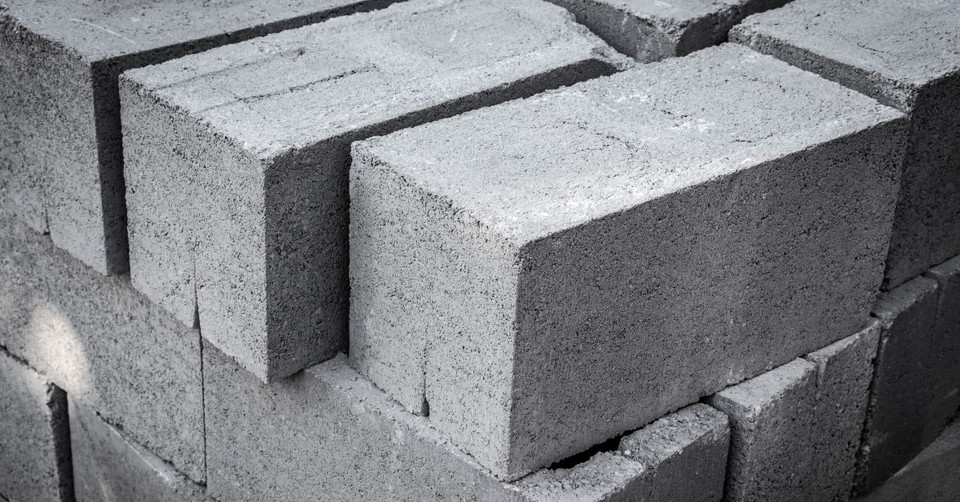What Did Jesus Mean that He Was the Stone the Builders Rejected?

When Jesus said he was the stone the builders rejected, he was connecting himself to prophecies from the Old Testament and giving a message about his life that still applies today. As modern-day Christians, we still need to understand what it meant that he was the stone the builders rejected. To understand the metaphor, we need to understand what the Old Testament has to say about stones, especially cornerstones and capstones. Plus, it helps to know a little about architecture and construction.
Where Does Jesus Call Himself the Stone the Builders Rejected?
First, let’s look at the context of the scripture where Jesus identifies himself as the stone the builders rejected. In Matthew 21, the chief priests and elders challenge Jesus’ authority. Jesus tells the parable of the wicked farmers and asks the religious leaders what the lord of the vineyard will do to these husbandmen. They reply that the lord would destroy them and find new husbandmen. Jesus responds in Matthew 21:42:
“Jesus said to them, ‘Have you never read in the Scriptures: “The stone which the builders rejected has become the chief cornerstone. This was the Lord’s doing, and it is marvelous in our eyes”’”?
Jesus goes on to tell the leaders that the parable was about them. God had sent His son Jesus, and they rejected him, but Jesus would become the church’s cornerstone. The same event is also recorded in Mark 12:10 and Luke 20:17.
What Old Testament Verse Talks about the Stone the Builders Rejected?
When Jesus tells the religious leaders that he is the stone the builders rejected, he is quoting Psalm 118:22:
“The stone which the builders rejected has become the chief cornerstone.”
However, there are other places where the idea of a cornerstone is mentioned in the Old Testament. Let’s look at a few of them:
- “To what were its foundations fastened? Or who laid its cornerstone” (Job 38:6)
- “Therefore thus says the Lord God: “Behold, I lay in Zion a stone for a foundation, a tried stone, a precious cornerstone, a sure foundation; Whoever believes will not act hastily.” (Isaiah 28:16)
- “You watched while a stone was cut out without hands, which struck the image on its feet of iron and clay, and broke them in pieces… And in the days of these kings the God of heaven will set up a kingdom which shall never be destroyed; and the kingdom shall not be left to other people; it shall break in pieces and consume all these kingdoms, and it shall stand forever.” (Daniel 2:34, 44)
The reference from Job refers to creation and how God is the one who laid the cornerstone for everything that was built. Isaiah prophesies the coming of Jesus, who would be the cornerstone of Christianity. Daniel prophesies not only Jesus's first coming as the Messiah, the stone not cut by human hands, but also his second coming when he will establish an eternal kingdom with Christ as its cornerstone.
What Does It Mean that the Stone Rejected by Builders Became a Cornerstone?
In the New Testament, the apostles continued to expound on the idea of Jesus as the rejected cornerstone. In Acts 4:11, it says:
“This is the ‘stone which was rejected by you builders, which has become the chief cornerstone.’”
First, why does it say Jesus was rejected? There were various reasons:
- Lia Martin notes that people rejected Jesus for his attitude toward tradition, his religious education, and even his origins (being from Nazareth, starting his work in Galilee).
- Hank Hanegraaff explains that the religious leaders disliked Jesus outright for saying that God was His father, claiming to be the Messiah.
- As a Christianity.com article on the crowd turning against Jesus explains, many people expected Jesus to be another kind of Messiah a military or political leader.
Yet, Jesus was the church’s cornerstone or foundation stone. Jesus’ death and resurrection made salvation from sin and reconciliation with God possible. In Ephesians 2:20-22, Paul shows how the church is built on the foundation of Christ’s work:
“Having been built on the foundation of the apostles and prophets, Jesus Christ Himself being the chief cornerstone, in whom the whole building, being fitted together, grows into a holy temple in the Lord, in whom you also are being built together for a dwelling place of God in the Spirit.”
Now, the temple of God is no longer limited to a building; each believer becomes a temple that hosts the Holy Spirit. Knitted together, each of the living stones becomes a single unit: the church.
What Does Jesus Being the Stone the Builders Rejected Mean for Us Today?
In architecture, the cornerstone is the first stone laid on which the rest of the building is built. It marks the beginning of the project. Usually, something is inscribed on the stone to commemorate what is being built. Jesus is the cornerstone, or foundation, of the church. Our faith is built on his death and resurrection.
Jesus is also the keystone. In architecture, the keystone is the stone at the highest point at the top of the arch that holds all the pieces together. Our faith centers on Jesus, as should our walk here on earth. He is what holds the church together and is the head of the church. We should always be looking up to Him.
Finally, he is the capstone. In architecture, the capstone is the last piece put in place to show that the work is finished. It is usually also inscribed to show the completion of the project. Jesus' second coming will finish what he started.
Revelation 1:8 tells us that Jesus is the beginning and the end. He was in the beginning of creation, He is in Heaven at God’s right hand, and He will come again. He is the cornerstone, the keystone, and the capstone.
1 Peter 2:4-9 gives us several key points about Jesus as the cornerstone which was rejected:
- Christ was a living stone who was rejected by men (vs. 4)
- Christians are also living stones (vs. 5)
- Jesus became the cornerstone (vs. 6-7) and a stumbling block to those who rejected him (vs. 8)
- Christians are “a chosen generation, a royal priesthood, a holy nation, His own special people” who are to be His witnesses here on earth (vs. 9).
Because of the offer of salvation, we must choose what we will do with Christ. We can accept or reject him. If we reject Jesus, he becomes a stumbling block, which leads to eternal death. If we accept him, he becomes the means of our salvation.
As believers, we are transformed into living stones, which, when joined with other living stones, become the church. The church then becomes Christ’s witnesses to those around us. Some will choose to reject Him, but if we share the good news with them, then we are not held responsible for their choices. Others will accept Him, and we can celebrate and make disciples of them as they become another living stone in the church universal of God.
Jesus is the cornerstone the builders rejected, but we can choose the foundation on which we build our lives. When we choose Christ, we are guaranteed to build on a sure foundation that will never fail. It can withstand any storm and the passage of time because Jesus is the beginning and the end, the cornerstone of creation.
Photo Credit:©GettyImages/SVproduction
Linda Lyle is a writer, teacher, knitter, and unintentional collector of cats. She has written articles for the Alabama Baptist, Open Windows, Refresh, as well as multiple novels and novellas. Her newest book, 5-Minute Prayer Plan for When Life Is Overwhelming, is set to release in October. She spins yarns on her blog The End of My Yarn at lindalyle.com.
This article is part of our larger resource library of popular Bible verse phrases and quotes. We want to provide easy to read articles that answer your questions about the meaning, origin, and history of specific verses within Scripture's context. It is our hope that these will help you better understand the meaning and purpose of God's Word in relation to your life today.
"Be Still and Know that I Am God"
"Pray Without Ceasing"
"Fearfully and Wonderfully Made"
"All Things Work Together for Good"
"Do Not Fear"
Originally published July 09, 2024.







